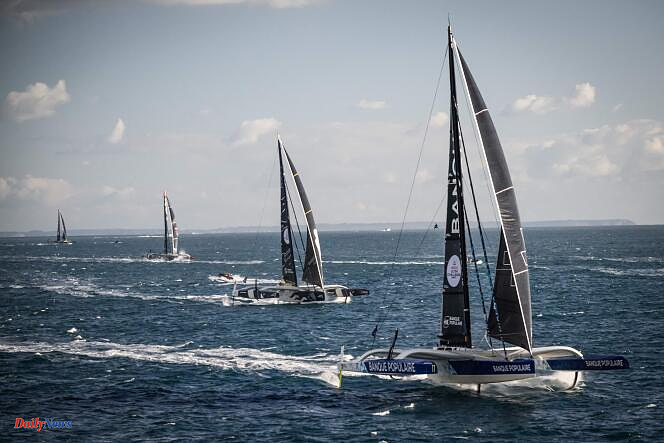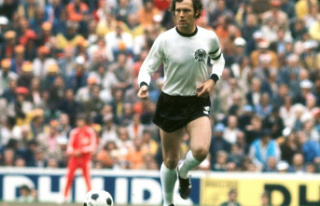“It’s off to a strong start! » After a first night spent at sea, Thomas Coville (Sodebo-3) is impressed by the pace imposed since the launch of the world tour in Ultim – the category of giant trimarans measuring 32 meters long by 23 meters wide. One day after their departure from Brest, the six skippers who set sail for the Arkéa Ultim Challenge-Brest, have already left the Bay of Biscay behind them and passed Cape Finistère, off the coast of Spain, Monday January 8.
The start, which brought together between 15,000 and 20,000 spectators around the Finistère city, already seems far away for these sailboats renowned among the fastest on the planet. Because the race of almost 40,000 kilometers linking Brest to Brest, on a route similar to the Vendée Globe (in the Imoca monohull category) started at a frantic pace. “They went very quickly last night, with a favorable wind force and angle,” analyzed the race director, Guillaume Rottee, on the event website.
The six competitors advanced at an average speed of 30 knots (55 km/h), and the race director reported peaks reached at 45 knots (83 km/h). “The pace is brisk. It’s as if we were going on a three-day race, but we’re going on a trip around the world,” summarized skipper Anthony Marchand (Actual-3), in a video published after 24 hours at sea. He and his five competitors however left for around forty days at sea.
First difficulties, five skippers side by side
The six participants had to remain vigilant during the first night of this ocean challenge. Several areas between the Breton coast and Cap Finistère are particularly dense with maritime traffic. “There is super erratic wind. It’s rare to have conditions like this. In addition, we slalom between the cargo ships, it’s not easy,” testified Tom Laperche (SVR-Lazartigue), youngest in the event.
A difficulty which created a first gap. “I had some small computer problems and therefore had a bit of difficulty positioning myself. It was a little stressful to go between 25 and 35 knots between the cargo ships, without seeing them too much,” commented Éric Péron (Adagio), who is already 143 kilometers behind his adversaries. At 5 p.m. on Monday, Charles Caudrelier (Maxi-Edmond de Rothschild) is in the lead, closely followed by Thomas Coville, Tom Laperche, Armel Le Cléac’h (Maxi-Banque-Populaire-XI) and Anthony Marchand.
In the coming days, the Ultims will sail towards the south of the Atlantic Ocean, to the Cape of Good Hope, in South Africa. They will then head east, towards Cape Horn, in the south of Latin America. Until then, everyone will have to avoid cetacean protection zones around the Balearic Islands and Cape Verde. An exclusion zone is also defined to avoid icebergs from the Great South off the coast of Antarctica. In addition to the depressions and storms that the competitors risk experiencing, this tour of the globe turns out to be quite a technical challenge. The six loners have a maximum of one hundred days to complete their journey. After Tuesday April 16 at 1:30 p.m., they will no longer be classified, but their follow-up will be ensured, as will their reception upon arrival.












